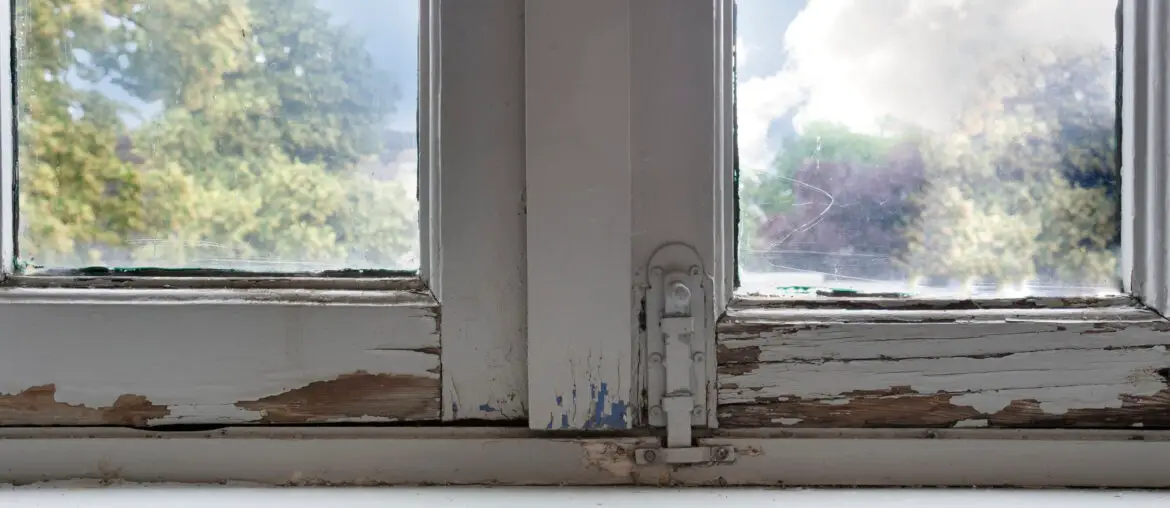Wavy glass windows are a common sight in older homes that have been inherited by old generations. They may look odd and wavy, but they have been the highly admired style in the old days. Glass windows were considered as a sign of wealth. These types of wavy glasses are considered valuable even at present. They are highly sought after by antique fans. You can buy either the old antique windows glass or get wavy glass window panes created with the same old look. However, there are reasons behind the different wavy appearances of old glass. Read on to find everything you must know about these wavy glass windows.
Table of Contents
Why is window glass wavy?
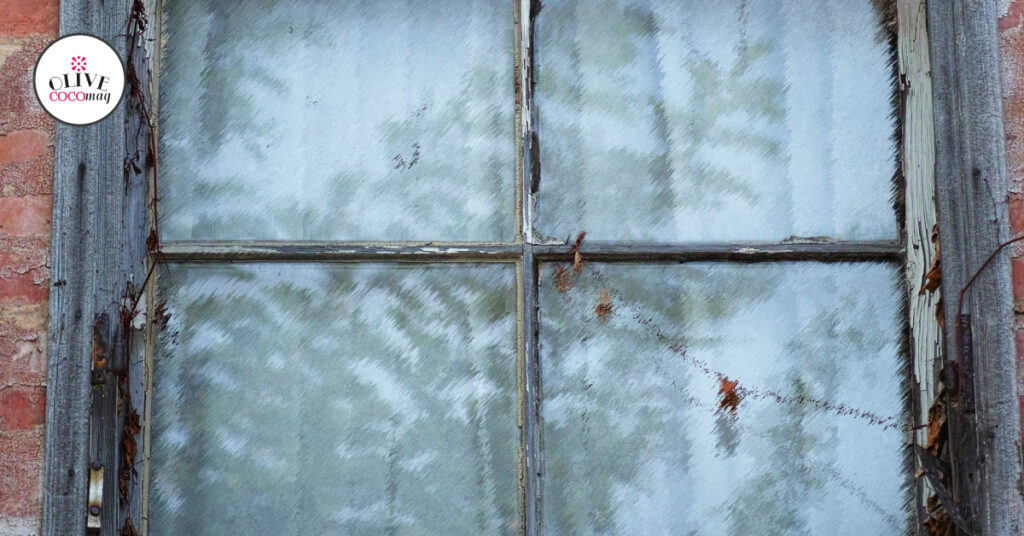
The window glasses produced in the 19th and 18th centuries were wavier than that of the early 1900s. They also had other imperfections due to the manufacturing process. In the earliest manufacturing of glass, the sheets of glass were manufactured by blowing through a tube. This resulted in tiny bubbles called seeds. Manufacturing defects such as these led to the wavy nature of older glass.
History of Wavy Glass
Wavy glass was a trendy style of glass used in windows and furniture before the early 1900s. The glasses were even wavier further into history. The glasses in the 1700s are even wavier than in the 1800s. This is because of the high distortion of glass. As the glass making was improved by craftsmen, the distortion became lesser. In the 1900s, glasses were produced by machines with industrial advancements. This led to better performance and low wavy nature. However, they still had imperfections. These glasses were used in cities of the United States in the early 1900s. Some of the types of wavy glasses are as follows.
What is Crown Glass?
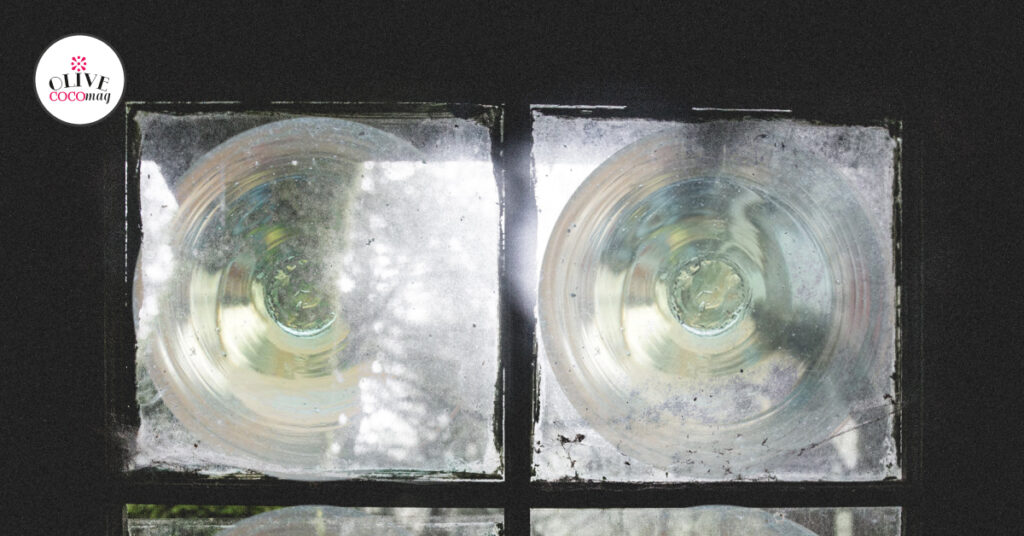
This glass was made by spinning it in a circular motion. Therefore, the waves were round. The end-knob imperfection in the centerpiece was known as the crown or bullion. This was even sold as small pieces of decorative glass. Sometimes it was sold as part of the window and used alongside windows and doors. This is commonly called bulls-eye at present. Due to its brilliant appearance, crown glass was considered a superior product to the types introduced later. Even though the crown glass was expensive, it was manufactured even in the 1800s.
What is Cylinder Glass?
Cylinder glass became a more active product in the industry in the mid-1600s. This type of glass was produced by swinging during manufacture. Therefore the waves were parallel and had a less curvy nature. They were less costly and had uniform thickness. Since large sheets were manufactured, there was less manufacturing waste made during the production. These were the standard window glasses by the 1800s. However, this glass still had a considerable amount of waves and bubble pockets. The broadsheet was an early version of cylinder-blown glass. This type was not used as window glass.
What is Machined Cylinder and Drawn Glass?
This type of glass is still seen in American cities. This has a resemblance to the cylinder-blown glass but has lesser distortion and is identified especially by its vertical lines. The Fourcault process and Colburn process were used to make this vertical drawn glass. This shows that increased mechanized methods were used in the glass production of this era. The glasses were cheaper and produced in wider sheets. Even though technological advancements led to less distortion in glasses, perfect glass was not created.
Large cylinders of glass were drawn from a machine vertically. The cylinders could even be 40 feet high. Then this glass was cut into smaller cylinders of length 7 – 10 feet. Then they were again cut into the required length and reheated to make them a flat big sheet of glass. Then the window makers were able to cut the amount they needed from this sheet of glass.
What Is Float Glass?

This type of glass was invented in the 1950s. This is the method used for glass manufacturing even at present. In this manufacturing process, a bed of molten tin is used for molten glass to float on. This is used to make sure that the glass remains flat throughout the process. Therefore, the float glass is smooth and free from distortion. Other types of glass like laminated glass and tinted glass are also created using this flat process.
How is Float Glass Made?
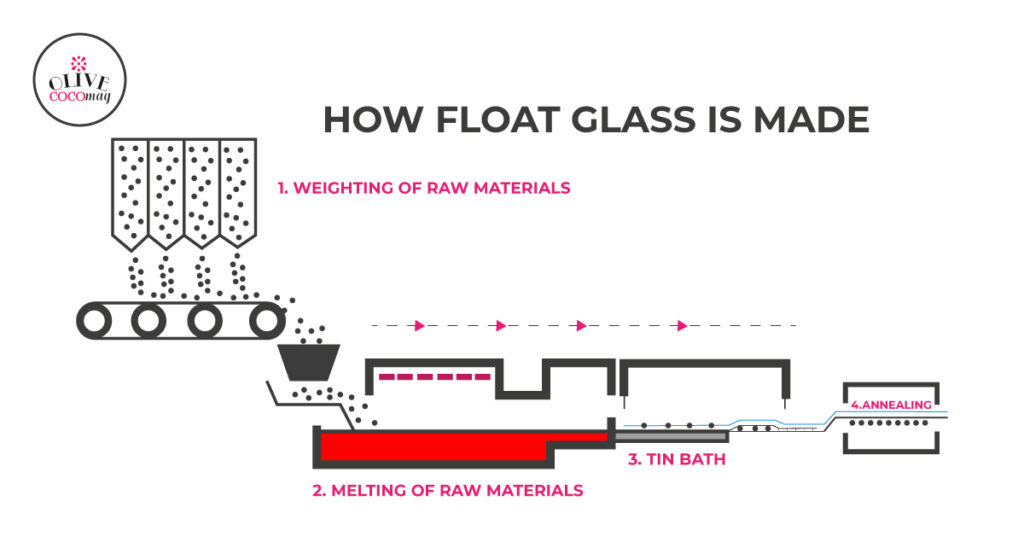
The glass is melted in a furnace, and this molten glass is poured into a chamber of molten tin. This is done in especially a controlled environment. Therefore, the molten glass floats on the molten tin. Molten glass takes the shape of the container. Before the manufacturing, the thickness of the glass should be decided. The width would vary between 90 and 140 inches. The upper side of the glass is polished with fire and is known as the ‘score side’ or the ‘airside.’ The underneath side is not polished and is known as the tin side. After the glass is taken out from the chamber, it should be put in lehr, which is an oven. Then the glass needs to be cooled under the annealing process.
What are the other types of similar antique glass?

- Carnival glass is another type of glass made in the early 1900s. They were pressed, iridescent glassware that was treated with metallic spray.
- Depression glass was used for mass-produced dinnerware. They came in many colors and are collectible antiques today. They are identified by small bubbles in the glass and are very delicate. These are considered elegant and manufactured in the 1920s and 30s.
- Milk glass dates back to the 16th century but was mass-produced in the 1960s. They were opaque or translucent, blown or pressed, and used mainly for decorative purposes. This glass also came in colors of yellow, pink, blue, brown, and even black.
Did they have glass windows in the 1500s?
Glass windows had appeared in the early modern period or the late middle ages. It was used by the nobles as a sign of wealth. In the past, only wealthy people could afford glass windows.
How did the ancients make glass?
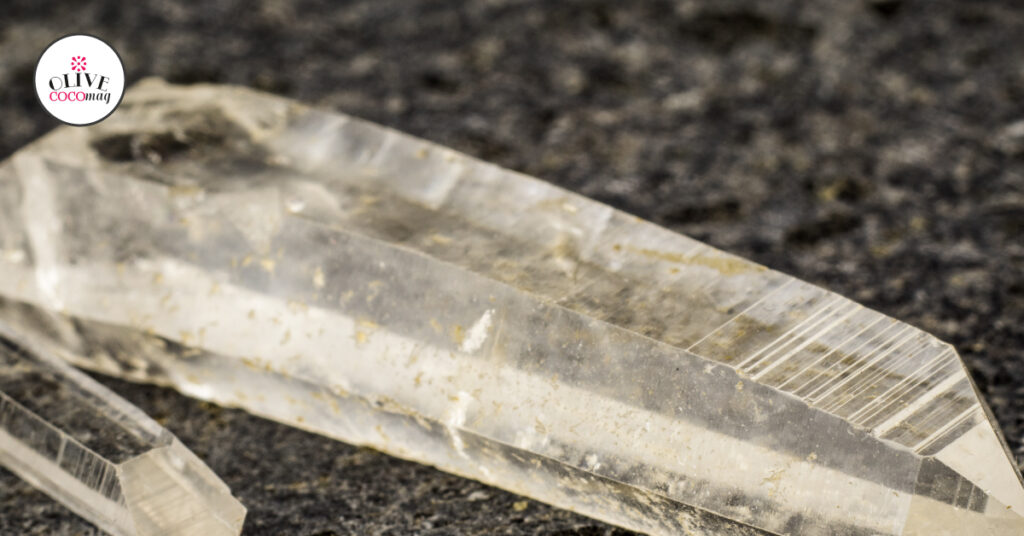
The history of glassmaking runs back to ancient Egypt. Glass was first made by using small pieces of quartz. They were crushed well and mixed with ash from burnt plants. Then this mixture was heated in clay containers starting from fairly low temperatures up to about 750 ˚C. Then a molten ball of glass was formed. This was then colored red or blue with metal-containing chemicals. The ancient Egyptians even have records of exporting this glass.
- Florida Tint Laws For Vehicles 2021Florida tint laws were enacted in 1991. The main intention of these laws is to safeguard public safety by ensuring proper visibility of the drivers. Since some towns and counties have
When did wavy glass stop being used?
With the increasing technological methods, the defects of the glass reduced. New procedures like the float method were discovered, which made glass manufacturing easier. Therefore, perfect glass with fewer defects and waviness was manufactured. This led people to use more smooth and perfect glass than the defective wavy glass windows. This happened in the early 1900s and gradually led to the decline of using wavy glass windows.
Should Wavy Glass in Windows be Removed?
If these wavy glasses are not the original creations, then you might need to replace them. However, if your home is old and historic, it is recommended to preserve these old fixtures and settings. It would also add a grand look to your house with a different aesthetic appeal. However, if there are problems related to the opening of the windows, sagging, and other concerns, then you might have to remove them.
If you are interested in installing new windows, you should also install proper window films for additional benefits. For more details, you can refer to Home Window Tinting and Commercial Window Tinting.
Where to Find Wavy Glass?
If you are interested in wavy glass, you can find them from certain places. There are architectural salvage shops in most large cities. Wavy glass can be found in these shops and also in antique shops. However, wavy glass might be more expensive in these antique shops. The antique windows glass is often valuable and costly. You can get wavy glass windows for a cost between $5 and $50. Sometimes you might have to spend more, depending on the size and waviness of the glass.
What is Restoration Glass for Wavy Glass Windows?
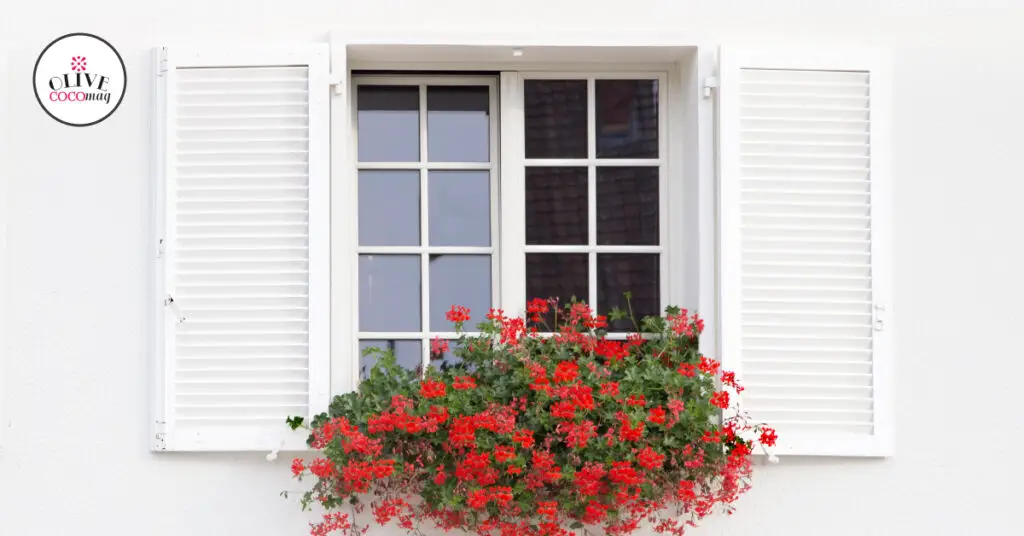
Various projects sometimes require old looks on buildings and windows. There are glass restoration manufacturers who create glass with similar wavy features as in the old ages. You can get samples from manufacturers to determine the best solution for your application. These wavy glass window panes are very similar to the antique windows glass, and the only difference is that they are not so old.
They are made using the traditional, authentic mouth-blown cylinder and crown glass techniques. You can get the glass cut according to the required specifications. These are also easy to handle than salvaged antique windows glass. These products are highly consistent with brilliance. Safety laminated form of these glasses is also available as this glass is being used in modern buildings and needs to provide safety and sound control benefits.
These additional safety features are available in different types of window films. Frosted Window Films provide the best solutions for your privacy concerns. The Security Window Films are suited for security concerns of your windows.
- Florida Tint Laws For Vehicles 2021Florida tint laws were enacted in 1991. The main intention of these laws is to safeguard public safety by ensuring proper visibility of the drivers. Since some towns and counties have
- Connecticut Tint Laws For Vehicles 2021The Connecticut tint laws for vehicles were enacted in 1994. This state has been the 24th state to enact these laws out of all 50 states in the United States. This
- ReTinting Car Windows: Why, How, And When?Retinting car windows are necessary because the films cannot be repaired once they are damaged. As the films are too thin and delicate, the only option is to retint car windows.
- Florida Window Tint Laws: Things You Need To Know Before TintingFlorida window tint laws were enacted in 1991. The main intention of these laws is to safeguard public safety by ensuring proper visibility of the drivers. Since some towns and counties
- Tennessee Window Tint Laws – 2021The Tennessee window tint laws were enacted in the year 1990. This state was the 11th to enact these laws out of all the 50 states. There are many important rules

